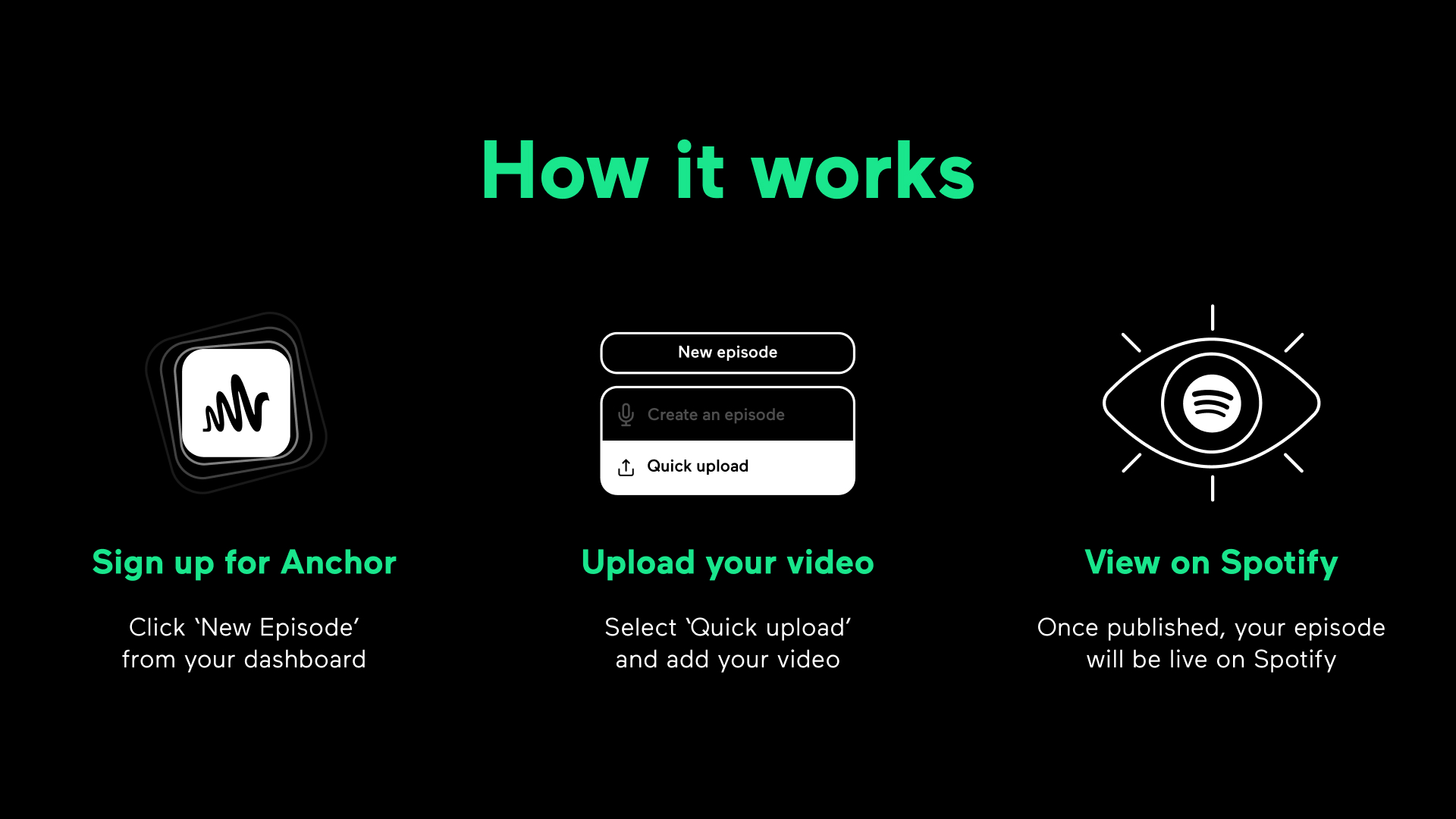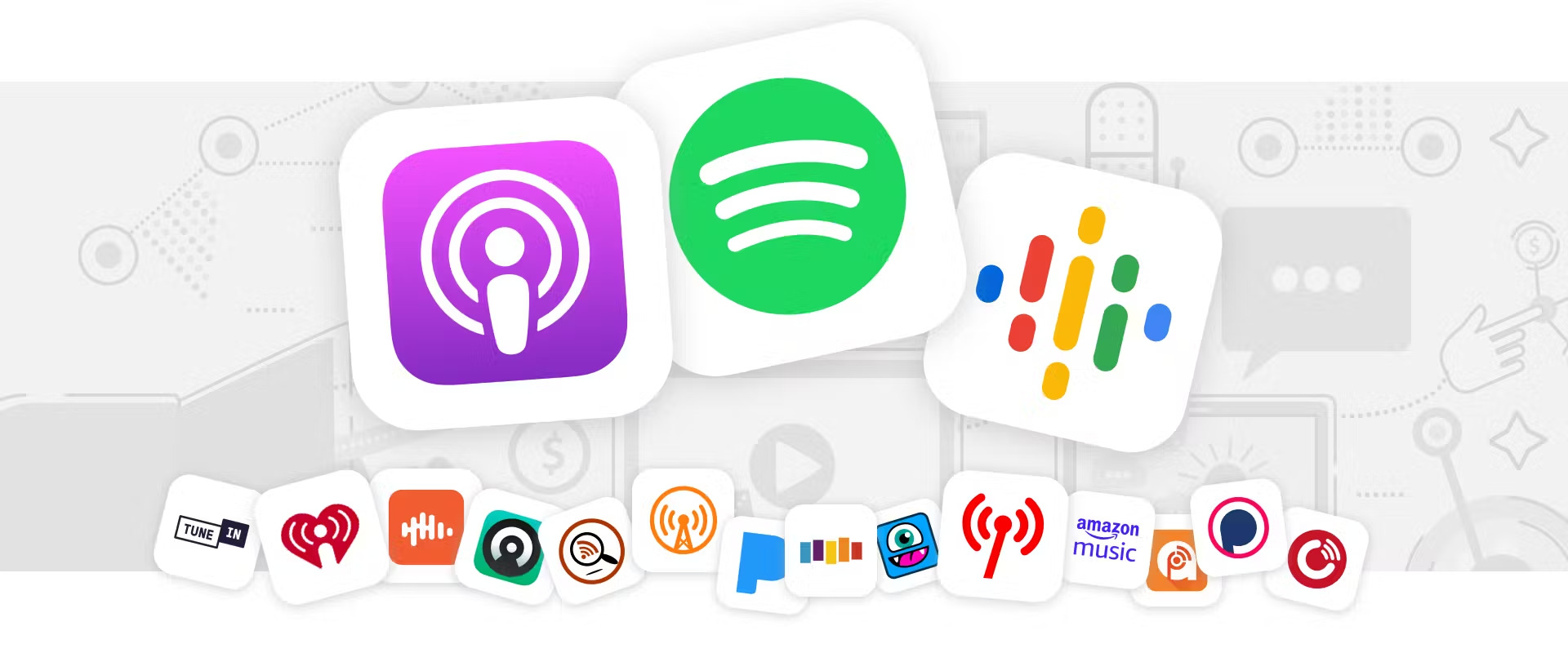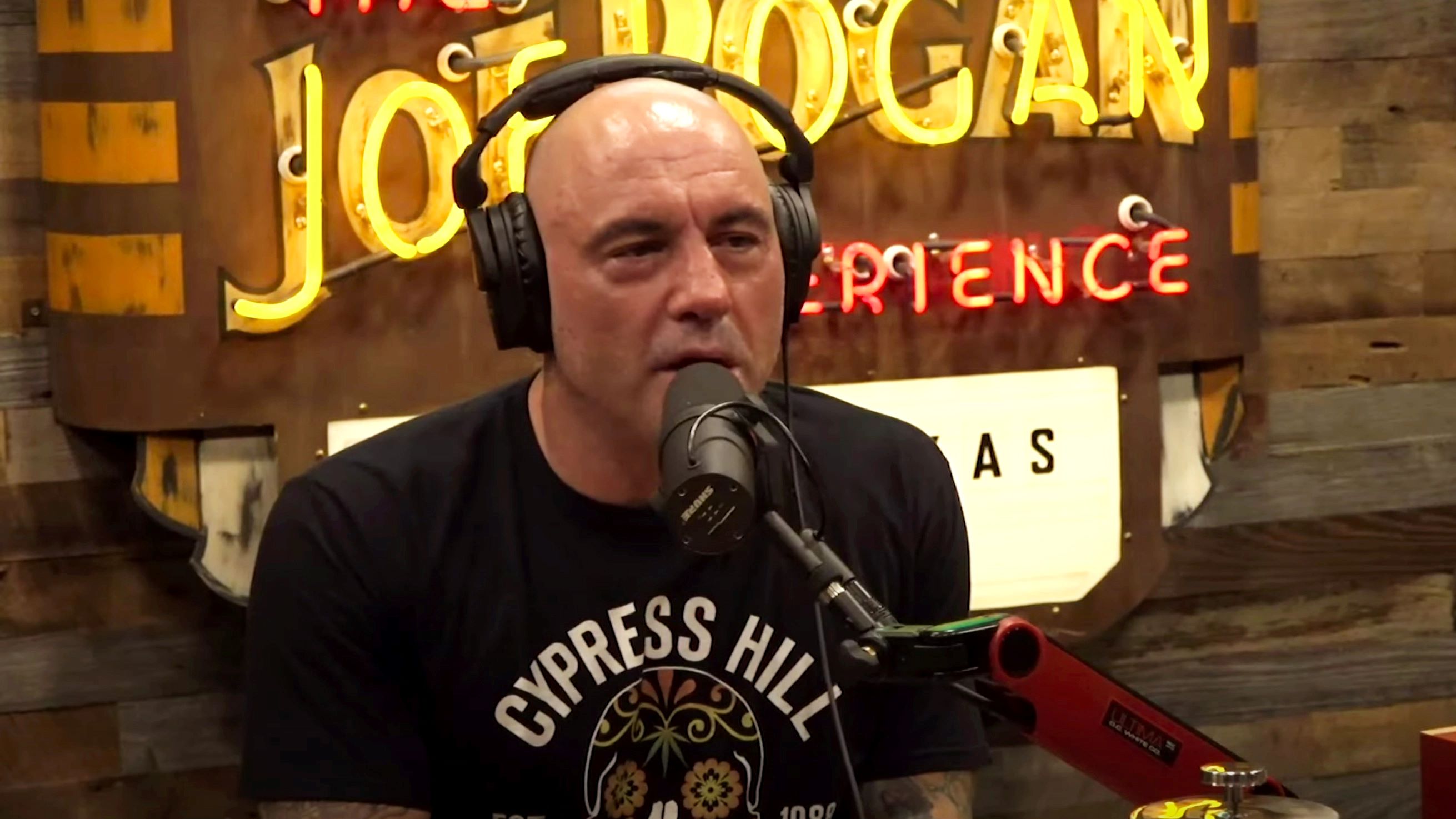Introduction
So, you’ve created an amazing podcast and you’re ready to share it with the world. One of the best ways to reach a wide audience is by uploading your podcast to Spotify. With over 286 million active users, Spotify is a popular platform that allows people to discover, listen, and subscribe to podcasts.
In this article, we will guide you through the process of uploading your podcast on Spotify. Whether you’re a seasoned podcaster or just starting out, this step-by-step guide will help you navigate the submission process and get your podcast live on Spotify in no time.
Before we dive into the steps, it’s important to note that while Spotify provides a large audience base, it’s still crucial to promote your podcast and engage with your audience on other platforms. Use Spotify as a tool for exposure, but don’t solely rely on it for the growth of your podcast.
Now, let’s get started on the journey to uploading your podcast to Spotify!
Step 1: Create a Spotify Account
The first step to uploading your podcast on Spotify is to create a Spotify account if you don’t already have one. Follow these simple steps:
- Go to the Spotify website or download the Spotify app on your mobile device.
- Click on the “Sign Up” button to begin the registration process.
- You have the option to sign up with your Facebook account or use your email address. Choose the method that is most convenient for you and follow the instructions to create your account.
- Once your account is set up, you will need to verify your email address to activate your Spotify account.
- After verification, you can log in to your Spotify account using your credentials.
It’s important to note that Spotify offers both free and premium subscription options. While you can upload your podcast on both types of accounts, it’s recommended to have a free Spotify account initially. Once you gain more listeners and traction, you can explore premium features for additional benefits.
Creating a Spotify account is quick and easy, allowing you to access the platform’s features and manage your podcast uploads efficiently. Now that you have your account set up, let’s move on to the next step.
Step 2: Prepare Your Podcast
Before you can upload your podcast on Spotify, it’s important to ensure that your podcast is properly prepared and ready for distribution. Here are some important steps to follow:
- Create Engaging Content: Develop interesting and valuable podcast episodes that cater to your target audience. Research topics, plan episodes, and create a content schedule to maintain consistency.
- Record High-Quality Audio: Investing in a good microphone and recording software will significantly improve the audio quality of your podcast. Ensure that your recordings are clear, free from background noise, and properly edited.
- Edit Your Episodes: Use audio editing software to enhance your podcast episodes. Trim unnecessary sections, add intros/outros, and improve the overall flow of your episodes.
- Add Metadata: Metadata is essential for your podcast’s discoverability. Add relevant information such as episode titles, descriptions, and tags. This will give potential listeners a clear idea of what your podcast is about.
- Create Eye-Catching Artwork: Design professional and visually appealing podcast cover art. This plays a crucial role in attracting listeners and setting your podcast apart from others.
- Create Intro and Outro Music: Consider creating or licensing unique music for your podcast’s intro and outro. This adds a professional touch and helps with brand recognition.
- Organize Your Episodes: Arrange your episodes into seasons and create a logical episode order. This helps listeners navigate through your content easily.
By properly preparing your podcast, you ensure that it delivers high-quality content and appeals to your target audience. Take the time to invest in the necessary equipment and editing processes to make your podcast shine.
Now that you’ve prepared your podcast, it’s time to move on to the next step: choosing a podcast hosting platform.
Step 3: Choose a Podcast Hosting Platform
Once you’ve prepared your podcast, the next step is to choose a podcast hosting platform. A hosting platform serves as the central hub for your podcast, handling the distribution, storage, and management of your episodes. Here’s what you need to consider when choosing a hosting platform:
- Features and Pricing: Look for hosting platforms that offer features like episode scheduling, analytics, monetization options, and easy RSS feed generation. Compare pricing plans to find one that fits your budget and offers the features you need.
- Reliability and Speed: Ensure that the hosting platform has a good reputation for uptime and fast delivery of your podcast episodes to listeners. A reliable platform will ensure that your podcast remains accessible to your audience at all times.
- Integration with Spotify: Check if the hosting platform seamlessly integrates with Spotify. Many hosting platforms have built-in submission tools that simplify the process of uploading your podcast to Spotify and other major podcast directories.
- Support and Resources: Look for a hosting platform that offers excellent customer support and resources for podcasters. This can include tutorials, forums, and troubleshooting guides to help you navigate any issues that may arise.
- Ownership and Control: Ensure that you have full ownership and control over your podcast and its content. Make sure the hosting platform allows you to migrate your podcast to another platform if needed without any hassle.
Some popular podcast hosting platforms to consider include Libsyn, Podbean, Anchor, and Buzzsprout. Take the time to research and compare these platforms to find the one that best suits your needs.
Once you’ve chosen a podcast hosting platform, you’re one step closer to getting your podcast on Spotify. In the next step, we’ll cover how to submit your podcast to Spotify.
Step 4: Submit Your Podcast to Spotify
Now that you’ve chosen a podcast hosting platform, it’s time to submit your podcast to Spotify. The process may vary slightly depending on the hosting platform you’re using, but the general steps are as follows:
- Retrieve Your Podcast’s RSS Feed: Log in to your podcast hosting platform and locate your RSS feed URL. This is a unique URL that contains your podcast’s episodes, metadata, and other necessary information.
- Access the Spotify Podcasters Portal: Visit the Spotify for Podcasters portal (podcasters.spotify.com) using your Spotify account login credentials.
- Claim Your Podcast: If this is your first time accessing the portal, you’ll need to claim your podcast by entering your podcast’s RSS feed URL. This allows Spotify to verify that you’re the rightful owner of the podcast.
- Submit Your Podcast: Once your podcast is claimed, you’ll be able to submit it to Spotify. Follow the prompts and provide any additional information requested, such as your podcast’s category, language, and country of origin.
- Review and Confirm: Review all the information you’ve entered before finalizing the submission. Double-check for any errors or missing details.
- Wait for Approval: After submitting your podcast, it will go through a verification process by Spotify. This can take a few days to a couple of weeks. You’ll receive an email notification once your podcast is approved and live on Spotify.
It’s important to note that Spotify has certain guidelines and requirements for accepting podcasts. Ensure that your podcast meets their content policies and technical specifications to increase your chances of approval.
Once your podcast is approved on Spotify, you can move on to the next step: customizing your podcast profile. We’ll cover that in the next section.
Step 5: Customize Your Podcast Profile
After successfully submitting your podcast to Spotify, it’s time to customize your podcast profile. Customization allows you to make your podcast stand out and engage with your listeners. Here’s what you need to do:
- Add a Descriptive Podcast Description: Craft a compelling description that accurately represents your podcast. Explain what topics your podcast covers, what sets it apart, and why listeners should tune in.
- Choose a Captivating Podcast Cover Art: Upload eye-catching and high-resolution podcast cover art that represents your brand and attracts potential listeners. Make sure it meets the requirements and dimensions specified by Spotify.
- Provide Links and Contact Information: Include links to your website, social media profiles, and any other relevant resources. This allows listeners to connect with you and access additional content related to your podcast.
- Select the Appropriate Language and Category: Specify the primary language of your podcast and choose the most relevant category or genre. This helps Spotify recommend your podcast to users interested in similar content.
- Add Episode Titles and Descriptions: Make sure each episode has a descriptive and enticing title that grabs listeners’ attention. Craft brief and engaging descriptions for each episode, giving potential listeners a glimpse of what they can expect.
- Consider Spotify-Specific Features: Spotify offers additional features that can enhance your podcast, such as episode chapters, Spotify Canvas, and personalized episode artwork. Explore these options to make your podcast more interactive and visually appealing.
Remember, customization plays a vital role in attracting and retaining listeners. Take the time to thoughtfully curate your podcast profile to make a lasting impression.
Now that you’ve customized your podcast profile, it’s time to move forward and start publishing your episodes. The next step will guide you through the process.
Step 6: Start Publishing Your Episodes
With your podcast approved and your profile customized, it’s time to start publishing your episodes on Spotify. Here’s how to do it:
- Upload Your Episodes to Your Podcast Hosting Platform: Use the dashboard of your chosen podcast hosting platform to upload and publish your episodes. Ensure that each episode is properly labeled, tagged, and includes all the necessary information.
- Set the Episode Release Schedule: Decide on a consistent release schedule for your episodes. Whether it’s weekly, bi-weekly, or monthly, sticking to a schedule helps you build a loyal audience that knows when to expect new content.
- Preview and Publish: Before publishing each episode, take the time to preview it and ensure that everything is in order. Check for any audio issues, ensure the episode description is accurate, and confirm that the episode is set to go live.
- Monitor Podcast Analytics: Most podcast hosting platforms provide analytics that give insights into your podcast’s performance, including the number of listens, geographic distribution of listeners, and audience retention. Monitor these metrics to track your podcast’s growth and make informed decisions.
- Engage with Your Listeners: Encourage your listeners to provide feedback, leave reviews, and engage with you on social media. Take the time to respond to comments and messages to build a loyal community around your podcast.
Consistency is key when publishing your episodes. Stick to your release schedule and ensure that each episode is of high quality and adds value to your listeners’ experience.
Now that your episodes are being published, it’s time to focus on promoting your podcast on Spotify. The next step will guide you through the process of increasing your podcast’s visibility.
Step 7: Promote Your Podcast on Spotify
Now that your podcast is live on Spotify, it’s time to promote it and reach a wider audience. Here are some effective ways to promote your podcast on Spotify:
- Share on Social Media: Utilize various social media platforms to share your podcast episodes and engage with your audience. Create engaging posts, share snippets from episodes, and encourage your followers to listen and share with their networks.
- Collaborate with Other Podcasters: Collaborate with fellow podcasters in your niche by appearing as a guest on their show or hosting them as guests on your podcast. This cross-promotion can introduce your podcast to new audiences.
- Reach Out to Influencers: Identify influencers or industry experts who align with your podcast’s content and reach out to them for potential collaborations, mentions, or shout-outs. Their endorsement can significantly boost your podcast’s visibility.
- Utilize Email Marketing: Build an email list of your podcast listeners and regularly send them updates, episode announcements, behind-the-scenes insights, and exclusive content. This helps nurture your audience and keeps them engaged.
- Participate in Podcast Directories and Communities: Submit your podcast to various podcast directories and communities related to your niche. This increases the chances of your podcast being discovered by listeners who are actively searching for new shows to listen to.
- Offer Incentives and Giveaways: Create special offers, giveaways, or exclusive content for your listeners to encourage them to spread the word about your podcast. This can help generate buzz and attract a wider audience.
- Run Paid Advertising Campaigns: Consider running targeted advertising campaigns on social media platforms, search engines, or through podcast-specific ad networks. This can help you reach a larger audience and attract new listeners to your podcast.
Remember, promoting your podcast requires consistent effort and experimentation. Monitor the impact of your promotional activities, track your growth, and adjust your strategies accordingly.
Congratulations! By following these steps, you’ve successfully uploaded and promoted your podcast on Spotify. Now it’s time to continue creating valuable content, engaging with your audience, and building a thriving podcast community.
Conclusion
Uploading your podcast on Spotify opens up a world of possibilities and allows you to reach a vast audience of potential listeners. By following the step-by-step guide outlined in this article, you’ve learned how to create a Spotify account, prepare your podcast, choose a hosting platform, submit your podcast to Spotify, customize your podcast profile, start publishing your episodes, and promote your podcast to expand its reach.
Remember that creating and maintaining a successful podcast takes time, effort, and consistent dedication. It’s important to continuously improve the quality of your podcast, engage with your audience, and explore various promotional strategies to attract new listeners.
Additionally, don’t limit yourself to Spotify alone. While it is a popular platform, it’s also beneficial to promote your podcast on other platforms and platforms that align with your niche. Utilize social media, collaborate with other podcasters, and explore different marketing avenues to maximize your podcast’s exposure.
Lastly, creating valuable and engaging content should always be at the forefront. Tailor your episodes to your target audience’s interests, provide valuable insights, and continuously seek feedback to improve your podcast over time.
Now that you have the knowledge and tools to upload and promote your podcast on Spotify, it’s time to take action. Start implementing these steps, grow your audience, and share your unique voice through the ever-expanding world of podcasting.

























